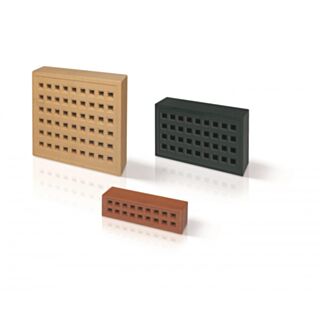Why Use Airbricks?
- Moisture Control: Allows continuous air circulation to reduce damp and condensation in enclosed spaces.
- Building Compliance: Meets UK standards for sub-floor and cavity wall ventilation.
- Durable Materials: Available in plastic, clay, or metal for various environments and loads.
- Easy to Install: Compatible with brickwork and blockwork using standard building techniques.
- Pest Protection: Some models include grilles or mesh to prevent rodent and insect entry.
Product Range
- Plastic Airbricks: Lightweight, corrosion-resistant, and ideal for general domestic use.
- Clay Airbricks: Traditional look suitable for heritage buildings and period restorations.
- Metal Airbricks: Robust options for industrial settings and high-impact zones.
- Telescopic Airbrick Sets: Adjustable systems for connecting ground-level vents to upper floor levels.
- Airbrick Vent Grilles: Covers designed for airflow management and insect prevention.
FAQ
1. Where are airbricks typically installed?
Airbricks are usually placed at regular intervals in external walls to ventilate underfloor spaces, cavity walls, or roof voids.
2. Do airbricks prevent damp?
Yes, by promoting airflow, airbricks help prevent the build-up of moisture that causes damp, mould, and rot.
3. Can airbricks be painted?
Plastic and metal airbricks can often be painted with suitable coatings, though clay airbricks are best left untreated.
4. Do airbricks let in cold air?
They can allow cool air to circulate, which is necessary for ventilation. Floor insulation above the void helps retain warmth indoors.
5. Where can I buy airbricks?
A wide range of airbricks and ventilation accessories is available at MP Moran. Shop online or in-store for expert advice and dependable products.
Where to Buy
Ensure proper ventilation and a healthier building environment with airbricks - available now at MP Moran. Explore a range of sizes, styles, and materials to match your project needs, backed by trusted service and product knowledge.


